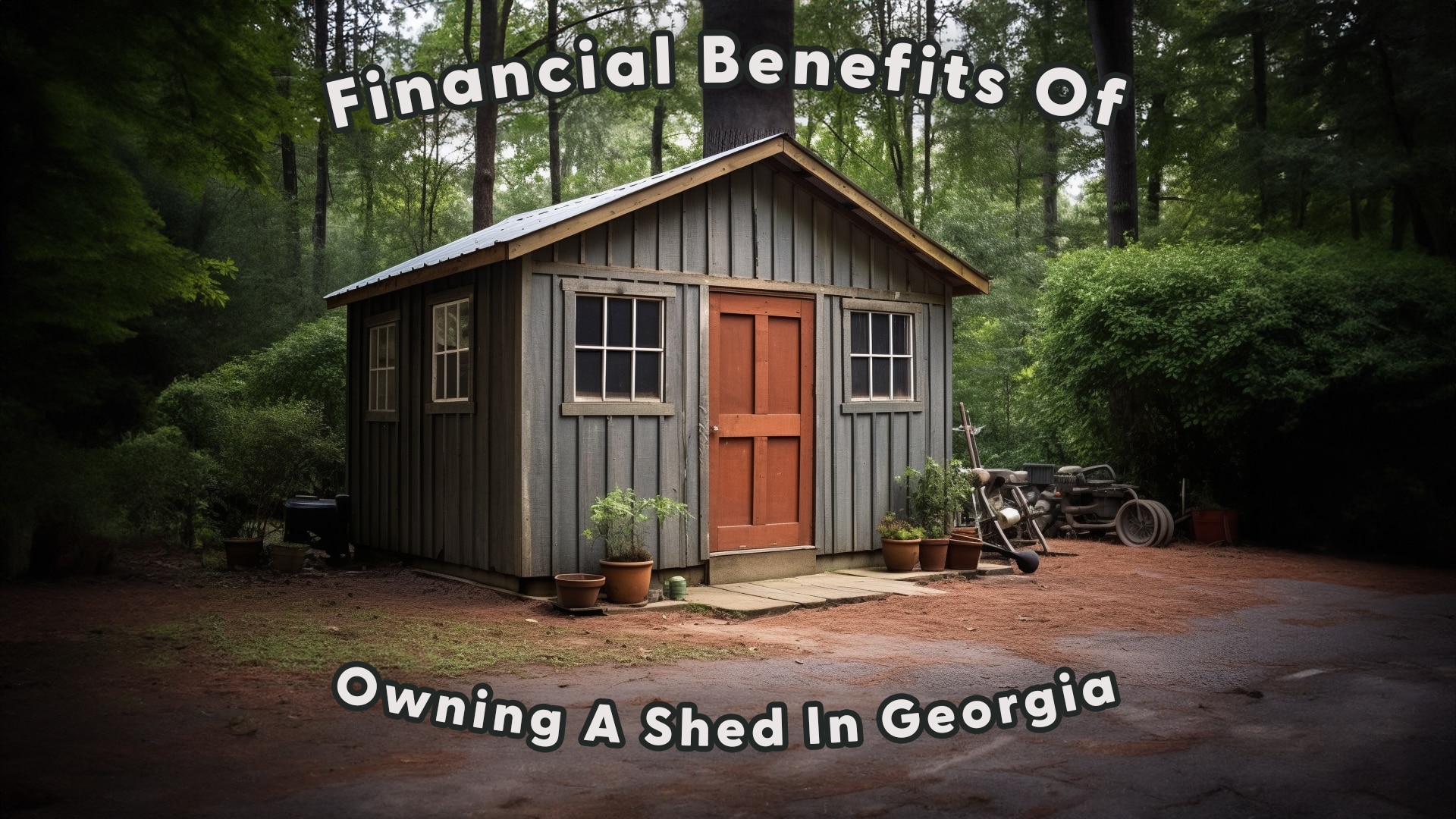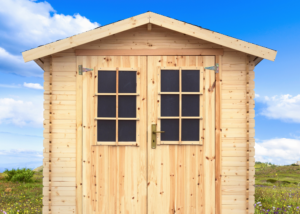When it comes to property investment, the old adage says that it’s all about ‘location, location, location’. But in recent times, savvy investors in Georgia have been considering an alternate mantra: ‘storage, storage, storage’. The demand for additional space has given rise to an interesting opportunity: investing in sheds and portable buildings. Historically, Georgia’s housing market saw a trend of large estates with sprawling land. However, as the state urbanized, there was a tangible shift.
Enter the realm of portable buildings and sheds. These structures are more than just a space-saving solution; they’ve emerged as cost-effective housing and storage solutions, fulfilling a multitude of needs for homeowners. From a financial standpoint, these buildings offer an intriguing Return on Investment (ROI) opportunity, particularly in the booming Georgia housing market.

The Modern Relevance of Storage Solutions
Portable buildings in Georgia are not just mere structures anymore; they have evolved into essential components of modern living. With Georgia’s housing market being competitive, homeowners are constantly looking for ways to enhance the value of their property. One effective method has been the introduction of portable buildings and sheds.
These structures serve a dual purpose: providing necessary storage space and potentially increasing property value. The ongoing trend of minimalism coupled with a surge in consumer goods means that while homeowners might be decluttering, they still require a space to keep their belongings. This is where a self storage facility, particularly rent to own sheds, come into play.

Sheds vs. A Self Storage Facility: Which is Right for You?
When considering additional storage solutions, there are two primary options that most Georgians contemplate: investing in a portable building or renting space at a self storage facility. Here’s a comparative analysis of both:
Convenience and Accessibility
Portable Buildings: Having a portable building on your property means immediate and around-the-clock access to your stored items. There’s no need to drive to a separate location or adhere to business hours.
Self Storage Facility: Depending on its location, accessing your belongings may require a bit more planning. Most facilities have specific hours, though some offer 24-hour access.
Cost and Commitment: Weighing The Monthly payments
Portable Buildings: There’s an upfront cost, but with options like rent to own, it translates into a long-term investment. Over time, the overall expenditure can be less than renting space, especially as you eventually own the building.
Self Storage Facility: Renting space involves recurring monthly fees. Over several years, these costs can surpass the one-time purchase of a portable building. You also won’t get any return on investment since you’re essentially paying for temporary space.
Space Customization
Portable Buildings: You have more freedom to customize the interior layout, shelving, and other features according to your specific storage needs. Plus, aesthetic changes can be made to complement your property.
Self Storage Facility: Customizations are limited. Units come in standard sizes and you can’t make permanent changes.
Security
Portable Buildings: The security largely depends on your home security measures. However, the advantage is that it’s on your property, under your watch.
Self Storage Facility: Most facilities offer security measures like surveillance cameras, gated access, and sometimes even on-site personnel. But remember, it’s in a communal space with other renters.
Duration and Flexibility
Portable Buildings: Ideal for long-term storage needs. Even if you only need storage for a short duration initially, the building remains a functional asset on your property.
Self Storage Facility: More flexible for short-term needs. If you’re looking to store items for a month or two, this might be a more economical choice.
Final Verdict
Both options have their merits. Your decision will depend on the duration of storage needs, the convenience factor, willingness to invest upfront, and desire for return on investment.

Challenges and the Cost Equation
Investing in a storage unit or building may seem like an additional expense. But when examined closely, the cost benefits are evident. Consider the monthly payments associated with renting a storage unit in a traditional self storage facility. Over time, these rental fees accumulate, often surpassing the cost of owning a portable building.
Furthermore, for those not keen on making an outright purchase, there’s the attractive option of “rent to own sheds”. This method eliminates the need for a credit check, a significant down payment, or even navigating the intricacies of a loan. It’s a simple monthly payment system, akin to a self storage facility rental, but with the ultimate benefit of ownership at the end.

Why A Rent to Own Shed Makes Financial Sense
For many Georgians, the concept of rent to own sheds is appealing for several reasons. Firstly, it’s an opportunity to own a storage building without the burden of a hefty upfront payment. It’s a monthly basis commitment, giving the owner flexibility and ease. Also, unlike traditional self storage facilities where one only pays for space without any long-term benefits, the rent to own agreement ensures that at the end of the term, the shed or building is entirely yours.
Renting storage space might seem like a lower cost initially, but the ongoing monthly payments without any tangible return can be financially draining. In contrast, a rent to own shed eventually becomes a property asset, contributing to the overall value of your land. It’s a great option that combines the benefits of both renting and purchasing.

Pitfalls to Avoid and Making an Informed Decision
While the financial advantages of investing in portable buildings in Georgia are plentiful, it’s essential to make informed decisions. Some pitfalls potential buyers should be aware of include hidden delivery fees, varying depending on the location, or being swayed by the base price without considering additional customization costs.
However, when approached judiciously, these structures are assets, both in terms of functionality and financial returns. As the Georgia housing market continues to evolve, it’s paramount to stay informed and ahead of trends. Connecting with a reputable business like Outdoor Options can provide valuable insights and help navigate the best choices for your needs.
Lastly, while portable buildings are an excellent investment, they aren’t the only option. It’s crucial to evaluate other options, understand the Georgia real estate landscape, and ensure your decisions align with your long-term financial goals.

Conclusion: Raising Home Value through Smart Investments
The financial landscape of property investment is ever-evolving. In Georgia, portable buildings and sheds have presented homeowners with an innovative way to not only enhance their living space but also boost the value of their homes. Whether it’s the ease of a rent to own agreement or the long-term benefits of owning a shed, the opportunities are plentiful. As the saying goes, “In real estate, the best investment is the one right under your roof.” And sometimes, it’s the one in your backyard.

Frequently Asked Questions
1. How does the rent to own shed process work? Rent to own allows customers to rent a shed on a monthly basis with the ultimate goal of owning it at the end of the term. There’s no credit check, and the monthly payments contribute to the purchase price.
2. How do portable buildings affect property taxes in Georgia? Portable buildings can affect property taxes based on their size and permanence. It’s best to consult local tax guidelines before installation.
3. What are the benefits of choosing a rent to own agreement over traditional self storage units? Rent to own sheds offer the advantage of eventual ownership, turning monthly payments into a long-term investment. In contrast, traditional storage units only provide space without the benefit of ownership.
4. Can I customize my rent to own shed? Absolutely! Companies like Outdoor Options offer customization, ensuring the shed meets specific needs and aesthetic preferences.
5. How do delivery fees for portable buildings work? Delivery fees can vary depending on the location and size of the building. It’s essential to discuss and confirm any delivery costs before finalizing the purchase.
6. How does owning a portable building affect the value of my property in Georgia? Having a well-maintained portable building can enhance the functionality and aesthetic appeal of a property, potentially raising its value in the competitive Georgia housing market.
7. Are there any hidden costs when it comes to rent to own sheds? Transparency is key. While some companies might have additional costs, it’s crucial to discuss all potential charges upfront and read the rent to own agreement thoroughly.
8. How does the cost of rent to own compare to traditional self storage facility rentals over time? While initial costs might be similar, over time, traditional storage facility rentals can accumulate without any return on investment. In contrast, rent to own agreements lead to property ownership.
9. Can I relocate my portable building if I move homes within Georgia? Yes, most portable buildings can be relocated, although there might be associated fees. It’s essential to discuss the possibilities and potential costs with the provider.
10. Is it possible to finance a portable building without the rent to own option? Yes, many companies offer financing options outside of rent to own agreements. It’s best to discuss these possibilities with the chosen provider and assess the financial implications.


